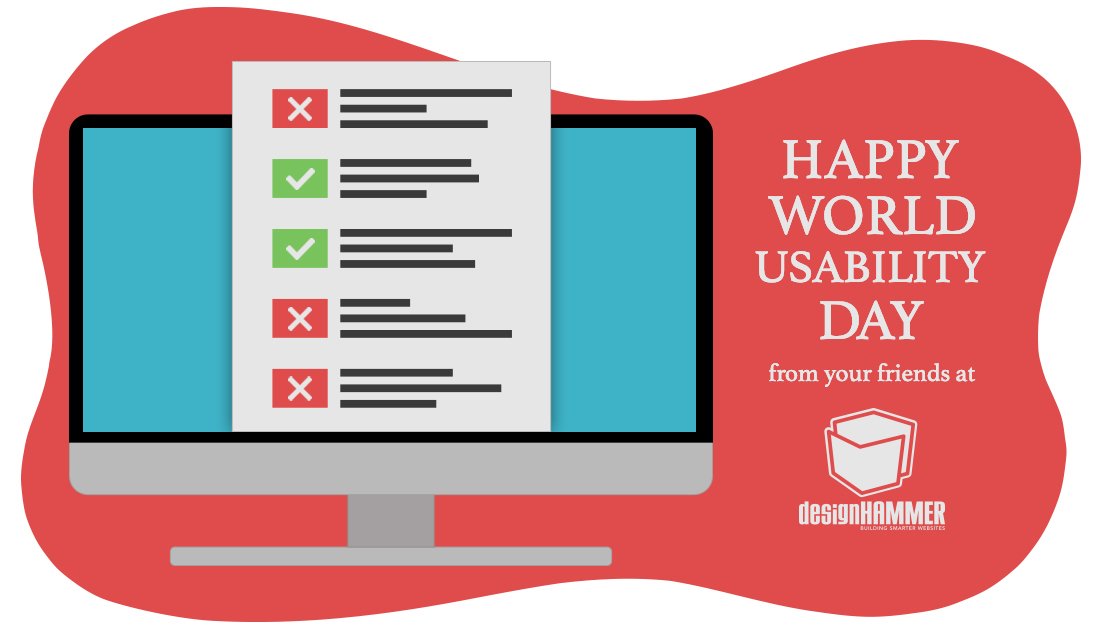Today is World Usability Day , an annual reminder to “promote the values of usability, usability engineering, user-centered design, universal usability, and every user's responsibility to ask for things that work better.”
Established in 2005 by the UXPA (User Experience Professionals Association), World Usability Day organizers encourage groups and individual usability professionals to promote usability around a different collective theme.
Usability professionals are not only meeting across the United States, from Arizona to Massachusetts, but also across the globe from Sweden to Iran. While I usually participate through the Triangle UXPA for better or for worse, nearly all will be remote, putting participation within reach of anyone with an Internet connection.
Previous years have focused on popular themes including “Sustainable/Green UX,” “Inclusion” or even “Design for Good or Evil.” For 2020, however, World Usability Day will tackle the ominous-sounding theme of Human-Centered AI (Artificial Intelligence).
 Source worldusabilityday.org
Source worldusabilityday.org
But what is Human-Centered AI? Are we talking Star Trek Voyager’s benevolent sentient holograms, or The Matrix style murder-death-kill machines?
Based on promotional material, maybe neither, or both?
“In our theme this year, Human-Centered AI we seek to explore design systems that are both highly automated and allow a great degree of user control and will result in expanding human capabilities 1000-fold. If we can design AI which is ‘reliable, trusted, and safe,’ we can dramatically enhance human performance in the coming decade."
Over the last two decades, computers have advanced humanity's ability to perform work, ensure our safety, and even lightened our workload. Interest in AI’s capabilities to expand human performance even further continues to increase. However, there is an accompanying fear that humans will lose control of the technology they create.”
According to predictions by Bank of America Merrill Lynch:
“By 2025 the “annual creative disruption impact” from AI could amount to $14 trillion-33 trillion, including a $9 trillion reduction in employment costs thanks to AI-enabled automation of knowledge work; cost reductions of $8 trillion in manufacturing and health care; and $2 trillion in efficiency gains from the deployment of self-driving cars and drones. The McKinsey Global Institute, a think-tank, says AI is contributing to a transformation of society ‘happening ten times faster and at 300 times the scale, or roughly 3,000 times the impact’ of the Industrial Revolution.”
But, something for UX designers to consider when reveling in such accomplishments is a “reduction in employment costs thanks to AI-enabled automation of knowledge work” is simply code for job cuts, or at least a slow in job growth in knowledge work fields that had to date been less susceptible to obsolescence as industrial and manufacturing jobs had in the last century.
On the other hand, well-designed learning systems make life easier in small but meaningful ways. Rather than constantly having to reprogram a dumb thermostat, home automation sensors such as those from Nest and Ecobee use motion sensors to detect occupant movement to custom-tailor, and constantly refine and adapt complex programs to anticipate when HVAC systems need to be turned on and off. The results are increased user comfort, along with improved energy efficiency. All without reduced headcount for all but the occupants of the largest mansions.
In the end, I’m still looking forward to networking with other user experience professionals and sharing ideas on how to create a more usable world through Human-Centered AI. Hopefully without murder-death-kill machine overlords.



Add new comment